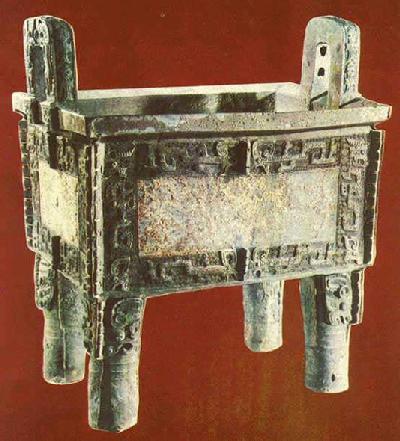| Art Q&A > Crafts |
|
|
Simuwu Rectangle Ding
In 1939, a bronze ding which is an ancient cooking vessel with two loop handles and three or four legs, was unearthed in Anyang, Henan Province. This four-legged ding known as the Simuwu Rectangle Ding was so big and heavy that it could not be moved after it was unearthed, although the Japanese invaders tried several times to plunder it. To protect this rare cultural relic, the local people reburied it and then unearthed it again after China won the Anti-Japanese War in 1945. The Simuwu Rectangle Ding is now in the National Museum of Chinese History.
Dings were used in Chinese Primitive Society as cooking utensils. At first they were made of pottery clay. Then, as metallurgy emerged and developed, the material was changed to bronze at the end of the Shang Dynasty about 3,000 years ago. By that time, dings had changed function to become sacrificial vessels and the symbol of their owners' power and wealth.
The Simuwu Rectangle Ding reveals a high level of casting technique and artistry. It represents the highest casting achievement of the Shang Dynasty. According to archeologists, the King of the Shang Dynasty had the Simuwu Rectangle Ding made to commemorate his mother. |
||||
All rights reserved. Reproduction of text for non-commercial purposes is permitted provided that both the source and author are acknowledged and a notifying email is sent to us. |
||||
 |
